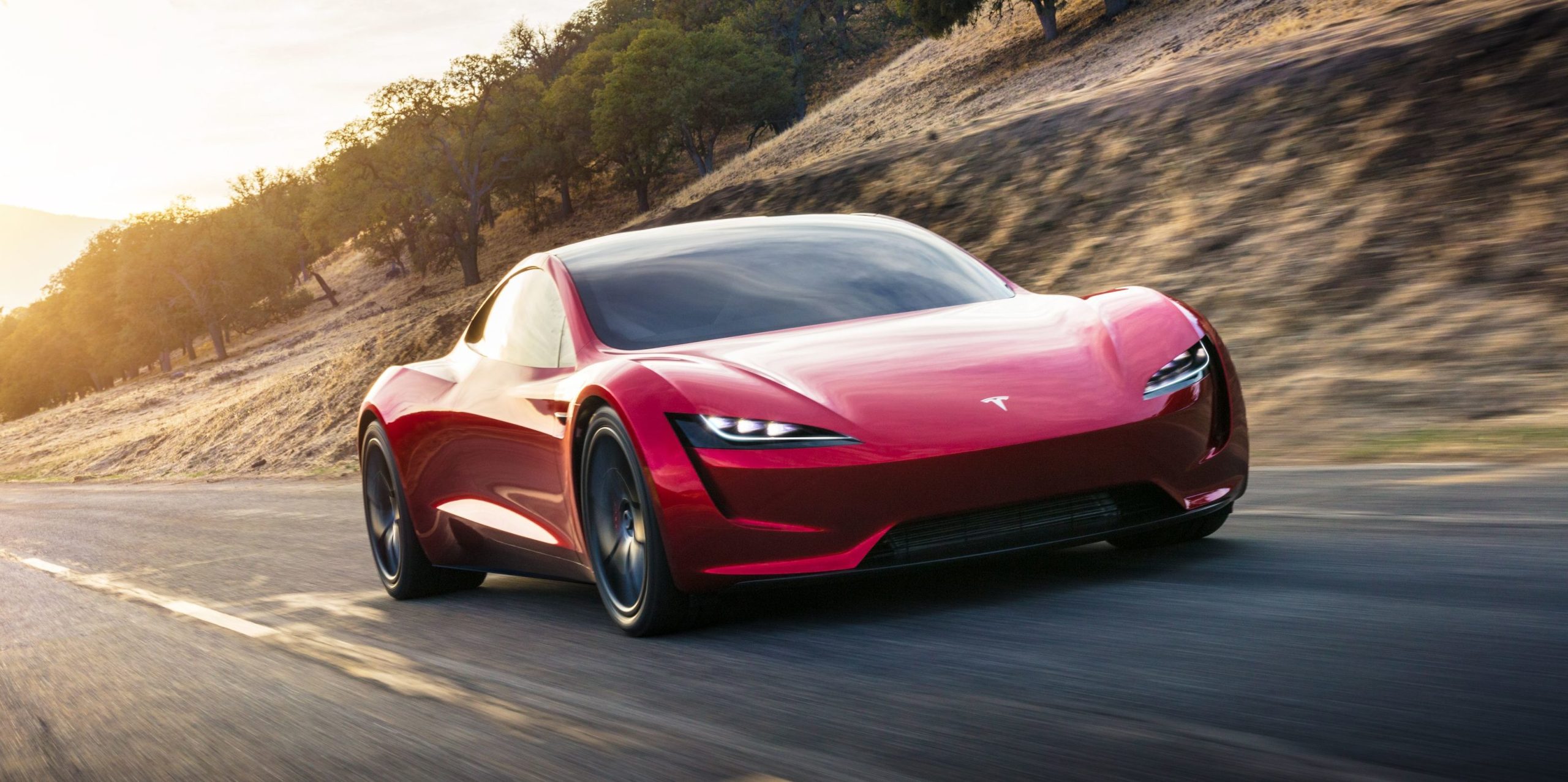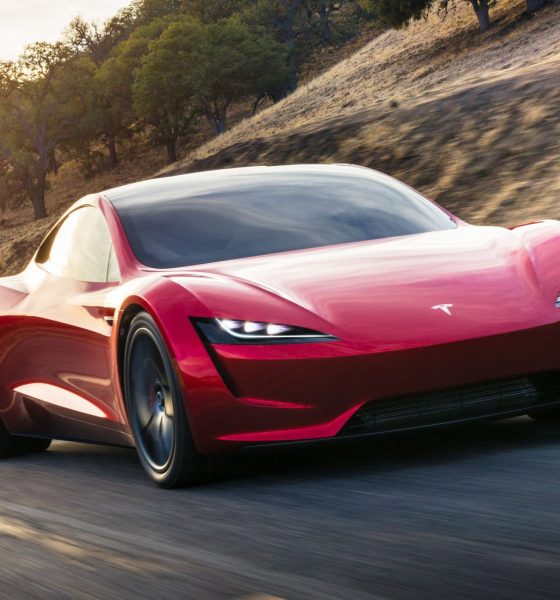

News
Ferrari CEO changes tune on EVs, “We have to do it” thanks to Tesla
After years of taking a strong stance against electric vehicles, Ferrari CEO Sergio Marchionne is finally ready to embrace the electric car revolution. In a statement during the 2018 Detroit Auto Show, an event which Tesla opted out of for the third year in a row, the Ferrari CEO announced that the iconic automaker is going to release the world’s “first” electric supercar.
It took a while for Marchionne to even accept the idea of an electric supercar. Over the past few years, the Ferrari CEO has made waves in the auto industry by describing cars like the Tesla Model S as “obscene” due to their lack of engine noise — something that Marchionne believes has to be present in a true supercar. The executive further stated that he would have to be shot first before Ferrari develops a self-driving electric vehicle. Considering his recent statements at the Detroit auto show, however, it seems like it would take far less than a bullet to change Marchionne’s mind.
All it seemed to take was the impending release of Elon Musk’s next-generation Tesla Roadster.
In a statement to Bloomberg, the Ferrari CEO declared that if there will ever be an electric supercar that would be released to the public, it would have the prancing horse on its badge. The Italian auto executive, however, asserted that he is not trying to discount the progress made by Elon Musk’s firm in the car industry. He simply believes that Tesla’s accomplishments can be attained by legacy supercar makers such as Ferrari as well.
“If there is an electric supercar to be built, then Ferrari will be the first. People are amazed at what Tesla did with a supercar: I’m not trying to minimize what Elon did, but I think it’s doable by all of us.”
The CEO further stated that he expects the development of Ferrari’s electric supercar to be a rather simple process. According to the executive, his firm would continue developing hybrid supercars, followed by an eventual transition to fully electric vehicles.
“We do it because we have to do it. While there is work to be done, the new plan for Ferrari being released in the first half will include hybrid cars, so going from there to an electric is easy,” the CEO said, according to a Bloomberg report.
In a lot of ways, Ferrari’s upcoming electric supercar would be a direct competitor to the next-generation Tesla Roadster, which is expected to be released sometime in 2020. While Tesla’s electric supercar is still in development, Musk announced that it would be able to hit 60 mph in 1.9 seconds and finish the quarter-mile in 8.9 seconds. The top speed of the next-gen Roadster was not revealed, but the Tesla CEO did state that it would be beyond 250 mph. Apart from its insane speed, the upcoming tri-motor electric Roadster also boasts a 200 kWh battery pack that’s capable of traveling 620 miles on a single charge.
Overall, it would be interesting to see how Ferrari’s upcoming electric supercar would compare to the next-generation Tesla Roadster. Ferraris, after all, have a strong lineage in Motorsports and track performance, something that Tesla has yet to accel in with its prone to overheating all-electric powertrain. Then again, the Tesla CEO also announced that the next-generation Roadster would be capable of cruising at autobahn speeds for hours. Thus, when the next-gen Roadster does get released, legacy supercar makers like Ferrari might have a pretty big surprise waiting for them in world-famous tracks like the Nurburgring.

News
Tesla FSD fleet is nearing 7 billion total miles, including 2.5 billion city miles
As can be seen on Tesla’s official FSD webpage, vehicles equipped with the system have now navigated over 6.99 billion miles.

Tesla’s Full Self-Driving (Supervised) fleet is closing in on almost 7 billion total miles driven, as per data posted by the company on its official FSD webpage.
These figures hint at the massive scale of data fueling Tesla’s rapid FSD improvements, which have been quite notable as of late.
FSD mileage milestones
As can be seen on Tesla’s official FSD webpage, vehicles equipped with the system have now navigated over 6.99 billion miles. Tesla owner and avid FSD tester Whole Mars Catalog also shared a screenshot indicating that from the nearly 7 billion miles traveled by the FSD fleet, more than 2.5 billion miles were driven inside cities.
City miles are particularly valuable for complex urban scenarios like unprotected turns, pedestrian interactions, and traffic lights. This is also the difference-maker for FSD, as only complex solutions, such as Waymo’s self-driving taxis, operate similarly on inner-city streets. And even then, incidents such as the San Francisco blackouts have proven challenging for sensor-rich vehicles like Waymos.
Tesla’s data edge
Tesla has a number of advantages in the autonomous vehicle sector, one of which is the size of its fleet and the number of vehicles training FSD on real-world roads. Tesla’s nearly 7 billion FSD miles then allow the company to roll out updates that make its vehicles behave like they are being driven by experienced drivers, even if they are operating on their own.
So notable are Tesla’s improvements to FSD that NVIDIA Director of Robotics Jim Fan, after experiencing FSD v14, noted that the system is the first AI that passes what he described as a “Physical Turing Test.”
“Despite knowing exactly how robot learning works, I still find it magical watching the steering wheel turn by itself. First it feels surreal, next it becomes routine. Then, like the smartphone, taking it away actively hurts. This is how humanity gets rewired and glued to god-like technologies,” Fan wrote in a post on X.
News
Tesla starts showing how FSD will change lives in Europe
Local officials tested the system on narrow country roads and were impressed by FSD’s smooth, human-like driving, with some calling the service a game-changer for everyday life in areas that are far from urban centers.

Tesla has launched Europe’s first public shuttle service using Full Self-Driving (Supervised) in the rural Eifelkreis Bitburg-Prüm region of Germany, demonstrating how the technology can restore independence and mobility for people who struggle with limited transport options.
Local officials tested the system on narrow country roads and were impressed by FSD’s smooth, human-like driving, with some calling the service a game-changer for everyday life in areas that are far from urban centers.
Officials see real impact on rural residents
Arzfeld Mayor Johannes Kuhl and District Administrator Andreas Kruppert personally tested the Tesla shuttle service. This allowed them to see just how well FSD navigated winding lanes and rural roads confidently. Kruppert said, “Autonomous driving sounds like science fiction to many, but we simply see here that it works totally well in rural regions too.” Kuhl, for his part, also noted that FSD “feels like a very experienced driver.”
The pilot complements the area’s “Citizen Bus” program, which provides on-demand rides for elderly residents who can no longer drive themselves. Tesla Europe shared a video of a demonstration of the service, highlighting how FSD gives people their freedom back, even in places where public transport is not as prevalent.
What the Ministry for Economic Affairs and Transport says
Rhineland-Palatinate’s Minister Daniela Schmitt supported the project, praising the collaboration that made this “first of its kind in Europe” possible. As per the ministry, the rural rollout for the service shows FSD’s potential beyond major cities, and it delivers tangible benefits like grocery runs, doctor visits, and social connections for isolated residents.
“Reliable and flexible mobility is especially vital in rural areas. With the launch of a shuttle service using self-driving vehicles (FSD supervised) by Tesla in the Eifelkreis Bitburg-Prüm, an innovative pilot project is now getting underway that complements local community bus services. It is the first project of its kind in Europe.
“The result is a real gain for rural mobility: greater accessibility, more flexibility and tangible benefits for everyday life. A strong signal for innovation, cooperation and future-oriented mobility beyond urban centers,” the ministry wrote in a LinkedIn post.
News
Tesla China quietly posts Robotaxi-related job listing
Tesla China is currently seeking a Low Voltage Electrical Engineer to work on circuit board design for the company’s autonomous vehicles.

Tesla has posted a new job listing in Shanghai explicitly tied to its Robotaxi program, fueling speculation that the company is preparing to launch its dedicated autonomous ride-hailing service in China.
As noted in the listing, Tesla China is currently seeking a Low Voltage Electrical Engineer to work on circuit board design for the company’s autonomous vehicles.
Robotaxi-specific role
The listing, which was shared on social media platform X by industry watcher @tslaming, suggested that Tesla China is looking to fill the role urgently. The job listing itself specifically mentions that the person hired for the role will be working on the Low Voltage Hardware team, which would design the circuit boards that would serve as the nervous system of the Robotaxi.
Key tasks for the role, as indicated in the job listing, include collaboration with PCB layout, firmware, mechanical, program management, and validation teams, among other responsibilities. The role is based in Shanghai.
China Robotaxi launch
China represents a massive potential market for robotaxis, with its dense urban centers and supportive policies in select cities. Tesla has limited permission to roll out FSD in the country, though despite this, its vehicles have been hailed as among the best in the market when it comes to autonomous features. So far, at least, it appears that China supports Tesla’s FSD and Robotaxi rollout.
This was hinted at in November, when Tesla brought the Cybercab to the 8th China International Import Expo (CIIE) in Shanghai, marking the first time that the autonomous two-seater was brought to the Asia-Pacific region. The vehicle, despite not having a release date in China, received a significant amount of interest among the event’s attendees.








